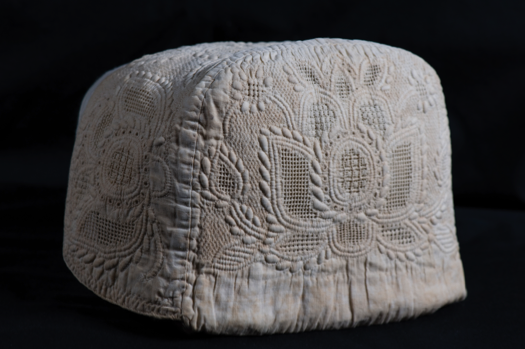
The International Quilt Study Center and Museum will present the first U.S. exhibition exclusively devoted to the French needlework tradition, "broderie de Marseille," Nov. 13-May 22.
"Marseille: White Corded Quilting" will demonstrate the qualities that make French whole cloth quilted and corded needlework unique, review the origins and development of the tradition, and describe its influence on quilted needlework traditions over three centuries on five continents.
Gov. Dave Heinemann has proclaimed the week of Nov. 13-20 as "Marseille Exhibition Premier Week." Guest curator Kathryn Berenson will visit from her Paris home and will be joined by the French consul general of the Chicago Consulate, Graham Paul, for a formal event recognizing the cultural significance of the exhibition. Berenson will give a talk and guide public tours Nov. 20.
Berenson is the author of "Quilts of Provence" and the new "Marseille: The Cradle of White Corded Quilting," published by the International Quilt Study Center and Museum and distributed by the University of Nebraska Press. Berenson has studied and collected extensively in France. The Marseille exhibition will include pieces from the Berenson and Dillow Collections, now part of the holdings of the International Quilt Study Center.
Broderie de Marseille is a form of low relief textile sculpture, which uses plain white cloth and white cotton cording to yield exquisite patterns and texture. The technique was widely copied and interpreted in Europe and America and enjoys great popularity today. Skillful execution of broderie de Marseille resulted in delicate, refined work that graced the homes and figures of aristocrats and launched a worldwide passion for all-white corded needlework. Contemporary versions, today often referred to commercially as matelasse, are machine made, however today's quilters have taken up the technique and produce unique creations.
The textile objects selected for this exhibition primarily will be white, featuring the play of light and shadow on their sculptural surfaces. They come from a period quite different from 21st century America. The exhibition will include bed coverings, ceremonial wedding quilts, petticoats, corsets and caps all showing a common fashionable taste, which emerged in the Western world in the 17th century.
The center's biennial symposium "Quilted and Corded Needlework: International Perspectives" is scheduled for April 1-2. Featured speakers include Linda Baumgarten, Berenson, Laurel Horton and Beverly Lemire. A free public lecture, sponsored by the Dillow Excellence fund, will be given by Berenson on the evening of April 1.
Programming associated with the "Marseille: White Corded Quilting" exhibition includes:
Nov. 20 - 10 a.m., Talk by Berenson, "Sweet Dreams Were Made of This;" 11 a.m. and 1 p.m., public tours of the exhibition, guided by Berenson.
Dec. 11 - Workshop, "American Girls Discover European Traditions/Tea Party.
Feb. 22 - Noon, Tuesday Talk, "The French Contribution to the Fashion World, 1860 and Beyond," Barbara Trout, professor of textiles, clothing and design at UNL.
March 13 - 2 p.m., public talk, "Marseille Quilting: Historical Perspectives," Frederique Sevet, a Lincoln resident and native of Marseille.
April 1 - 5:30 p.m., public lecture, "Mischief Stitched in White Thread: The Evolution of Marseille Quilting," Berenson (sponsored by the Dillow Excellence Fund)
April 1-2 - Symposium, "Quilted and Corded Needlework: International Perspectives."
April 10 - 1:30-4:30 p.m., workshop, "Make it Marseille."
Funding for the exhibition is provided in part by the Robert and Ardis James Foundation and the Mountain Top Quilters Guild of Prescott, Ariz. For additional information go to http://www.QuiltStudy.org or call (402) 472-6549.
- Maureen Ose, International Quilt Study Center and Museum
More details at: http://www.quiltstudy.org/